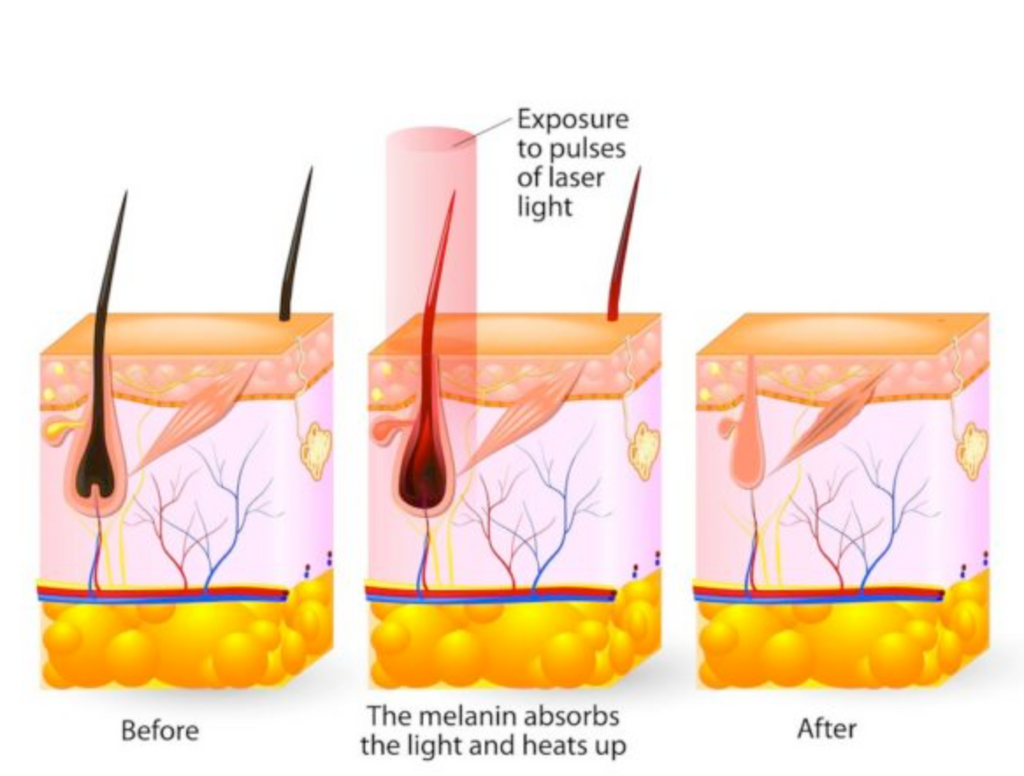The Importance Of Your Hair Growth Cycle For Laser Hair Removal

Laser hair removal is the best hair removal method. It is virtually painless, it is very fast and it helps to reduce hair growth by up to 90%. However, it is a procedure that requires a few sessions to achieve satisfactory results and it can be impacted by a lot of factors. That is why we always ask new and current patients before a session whether they have been taking medications, been on antibiotics, etc. We want to make sure that the procedure works great for them and is safe. Another thing that affects your results will be the hair growth cycle.
Unfortunately, the hair growth cycle is not something you can control. If you could, a thought would be enough to stop it. Would you need laser hair removal then? I think not. Each hair has a different hair growth cycle, meaning it can be tricky for the laser to catch all the hair at the right time. Because, indeed, laser hair removal will be optimal at a certain stage only. Let us explain.
1. The hair growth cycle explained
Therw are three different stages in the hair growth cycle. Wouldn't that be amazing if each single one of your hair was aligned on just one growth cycle? It would, but it would be too easy. And that's not how life is. Each hair has a different growth cycle which is why you will need several sessions. Each session will catch on average 18% of your hair since only a few of them will be at the right stage at the time of your session. What is that right stage you may ask? It is the first one, the anagen stage of the hair growth cycle. As it is indeed not advised to remove hair at the catagen or telogen stages.
Stage 1 - Anagen
The Anagan phase is the beginning of the hair growth cycle. It is when he hair grows more actively and is visible above the skin, yet still attached to the papilla. The papilla is "a knoblike vascular indentation of the bottom of the hair follicle on which the hair bulb fits." The reason the anagen stage is the best for laser hair removal is because since the hair is still attached to the papilla, the laser will target the latter, preventing any new hair growth. This "perfect stage" has a downside since only 20% of your hair are in this stage at once. This is why you need several sessions. Body hair can stay in this phase for up to four months.
Stage 2 - Catagen
The catagen phase happens between growth and rest, and is not ideal for laser hair removal. Indeed, that is when the hair will shed as growth stops and the outer root sheath shrinks and attaches to the root of the hair. The hair bulb will be pushed upoward as growth stops, and keratinized. Since the hair leaves the papilla, the laser will only be able to reach the hair itself. The follicle will remain intact and the papilla ready for a new hair growth cycle. The laser cannot reach the follicle once it separates. Fortunately, the catagen phase lasts only a few days so it is unlikely that most of your hair go through it during your laser treatments.
Stage 3 - Telogen
The telogan phase is the last stage of the hair growth cycle. It is also called the resting stage. Laser hair removal cannot be done at this stage as the hair is neither growing nor developing. The hair is not attached to the papilla either and the follicle is dormant. This stage is unpredictable and can last a few days and up to a few months. Eventually the hair will fall out and at the end of the stage the remaining club hair will be ejected. Then the anagen phase will start again.

2. How this cycle effects laser hair removal

Understanding the hair growth cycle is key to understanding why laser hair removal results are not immediate and why you ned several sessions before seeing satisfying results. Although each person is very different with their own cycle and that it might be difficult to spot at which stage they are, undergoing laser hair removal according to which stage you are at can really help improve the results of your sessions.
As mentioned above, the anagen stage is the perfect stage for laser hair removal. However, not all of your body hair will be at this sage, and even though you might see hair popping out of the skin, it might already be in the catagen stage. Which means that the laser will not be able to target the follicle for this particular hair and you will see regrowth later. You will need several sessions to ensure all the hair are treated regardless of what stage they are on during sessions.
It can take 6 to 12 weeks for the hair to go through the cycle. Scheduling sessions every six to eight weeks will give time for the skin to heal after your previous procedure but will also give time to the body hair not in the anagen stage to catch up, go through the proper cycle and enter their anagen phase on time for your next appointment.
However, you should not wait for more than ten weeks as the hair will enter the catagen stage again and the laser will not be able to target their follicle. Later down the line, you might have to go for touch ups as any hair that was in the telogen stage throughout your entire laser experience might start to grow in.
Are you ready to book your first laser hair removal appointment?





Leave a comment